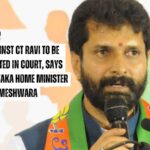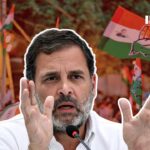As the Lok Sabha elections approach, political parties and related entities have increased their advertising efforts on Google. According to data from the Google Ads Transparency Centre, they have spent over Rs 117 crore on Google alone since January 1. This compares dramatically with the meagre Rs 10 crore spent by verified advertisers on political content advertisements on Google between January 1 and April 10, 2019, prior to the previous general elections.
The ruling Bharatiya Janata Party (BJP) is the top spender on political commercials, allocating Rs 39 crore, or almost one-third of the entire sum, for Google ads between January 1 and April 10. The government’s main advertising agency, Central Bureau of Communication (CBC), came in second place with payments of Rs 32.3 crore for political advertisements on Google over the same time frame.
Video advertisements have been the most popular format on Google, accounting for more than 82% of all the ads that have run during this time. Digital advertisements, according to Manish Bhatt, founder director of the advertising firm Scarecrow M&C Saatchi, provide better targeting choices, enabling political parties to customise their messages according to local languages and voting phases, therefore increasing their influence.
Political parties are increasingly using social media influencers for digital campaigning in addition to traditional advertising.
“Election ads” are defined by Google in India as those that are either run or feature a political party, political candidate, or a member of the Vidhan Sabha or Lok Sabha. These advertisements appear across a number of Google properties, such as YouTube, the Play Store, search, and third-party applications and websites that make money from Google Ads. Google and the Election Commission of India (ECI) have teamed to give information on political advertisements on Google’s search and YouTube platforms in an effort to counteract disinformation during elections.
Anticipated to transpire in seven stages between April 19 and June 1, the Lok Sabha elections have generated a great deal of advertising activity on internet platforms, especially Google.
In terms of digital advertising, BJP is in the top after running 76,800 ads on Google between January 1 and April 10. The party’s highest-budget advertisement lasted for 49 days, from February 10 to March 29, and it advocated the Center’s Jan Dhan plan in Hindi. It’s noteworthy that the BJP has mostly spent money on digital ads in states like Andhra Pradesh, Uttar Pradesh, and Odisha.
A considerable amount of funding has also been set aside for digital advertising by other political organisations, such as the Congress party and other regional actors, demonstrating the increasing significance of online platforms in political campaigning.
Geographically, Tamil Nadu leads the way in the last three months for the most money spent on political advertisements on Google, followed by Uttar Pradesh, Andhra Pradesh, and Odisha. However, spending patterns vary month by month, with different states leading in different periods.
Ad Surge on Meta’s platforms
Meanwhile, Political advertising has also increased on Meta’s platforms, Facebook and Instagram, especially after the Election Commission of India announced the dates of the Lok Sabha elections.
The Indian Express’s analysis of Meta’s ad library revealed that, of the top 20 marketers from March 17–23, seven accounts promoted BJP oriented content; no other big spender ran surrogate advertisements for any other political party. The total amount of money spent by the top 20 marketers was Rs 1.38 crore.
Using a range of material formats, such as cartoons and memes, surrogate political advertisers spread occasionally false information without disclosing their affiliation with the sponsored party. TExpress examined these advertisements, which ranged from endorsing BJP policies to criticising opposition leaders including Rahul Gandhi, Mamata Banerjee and Arvind Kejriwal.
For example, “MemeXpress” paid more than Rs 28 lakh for an advertisement that targeted West Bengal and contrasted footage of a shooting with the apprehension of a local legislator. Later on, Meta deleted it. Likewise, ‘Mudde ki Baat’ spent more over Rs 20 lakh airing a modified clip of Rahul Gandhi with an inaccurate caption.
Millions of people saw pro-BJP advertisements from other sponsors like “Sidha Chashma,” “Amar Sonar Bangla,” and “Tamilakam” that were run without disclosure. Meta left these in place despite the general consensus.
In comparison, the amount spent on stated promotions by the BJP and its state units was over Rs 23 lakh and Rs 9 lakh, respectively. Congress and the Trinamool Congress both set aside sizeable amounts for advertisements. Also, since 2018, companies such as I-PAC and PEN have made significant investments in endorsing parties, in violation of Meta’s disclosure regulations.









